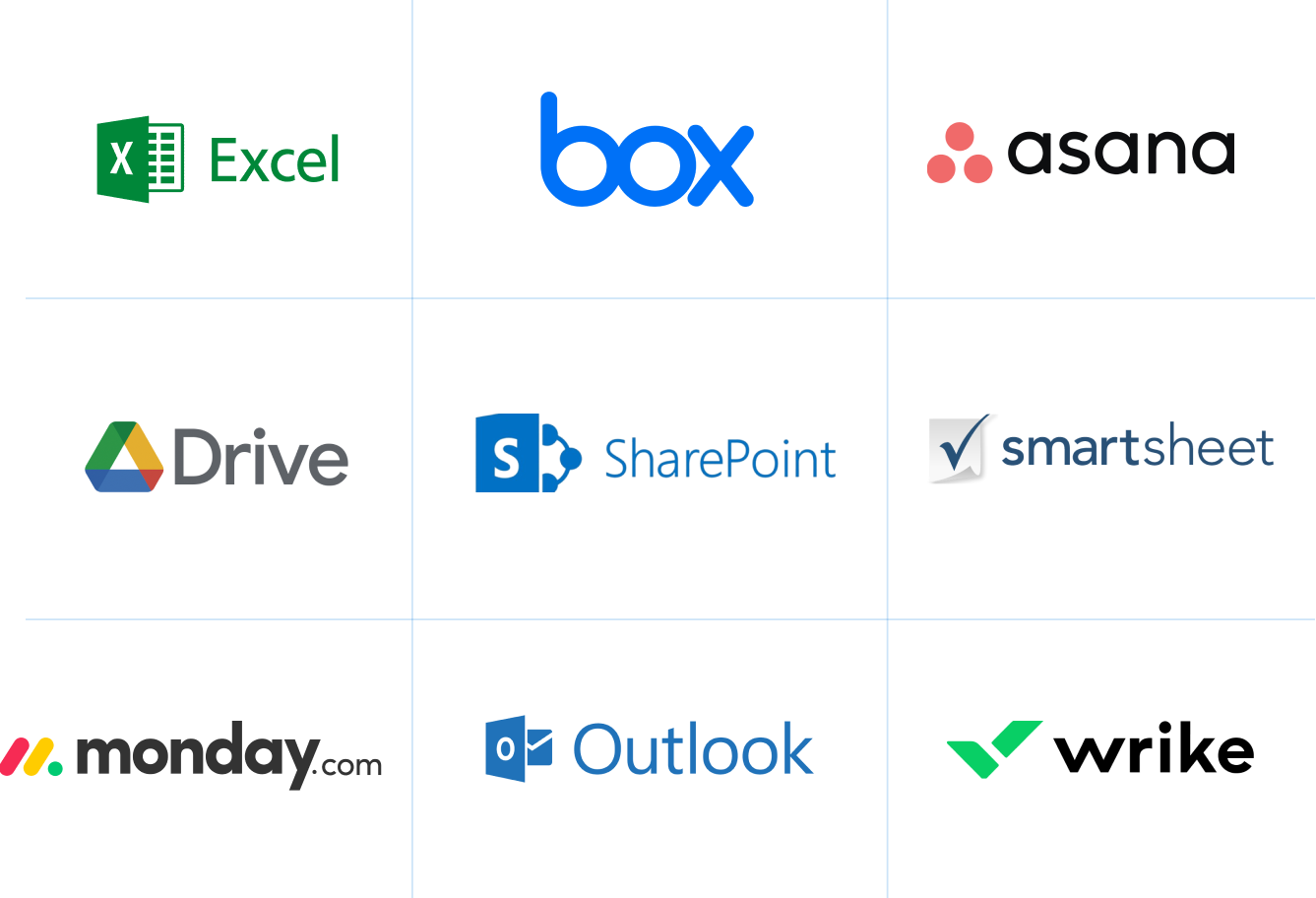
Top M&A Change Management Challenges & How to Overcome Them
Introduction
Welcome to our comprehensive guide on navigating the common change management scenarios that occur when adopting new approaches and technology in your M&A process. Within these pages, you’ll explore various aspects of M&A, from understanding the industry’s current state to addressing common change management challenges and how to overcome them. Our aim is to equip you with knowledge through real-world case studies, dissecting common hurdles, and offering innovative solutions and tools necessary to overcome them and optimize your M&A processes.
Whether you’re a seasoned M&A professional seeking to enhance your expertise or a business leader navigating the intricacies of strategic decision-making, this guide is tailored to meet your needs.


The Current State of M&A
The State of M&A: Execution-Focused
In the fast paced world of mergers and acquisitions (M&A), the vast majority of companies are merely focused on execution. But often (according to McKinsey, 70-90% of the time), despite the best-laid plans, the execution falls short, leaving organizations with unsuccessful deals that don’t achieve the original deal thesis.
In this execution-focused world, M&A professionals encounter various challenges, from managing data across disparate tools to communication breakdowns and limited visibility across the deal lifecycle. These complexities inherent in M&A transactions pose significant hurdles, even for seasoned practitioners. Without the right tools in place, M&A teams struggle to increase efficiency and achieve synergy realization and growth .
The M&A industry is overdue for a makeover. Traditional processes and outdated tools hinder agility and efficiency, making deals unnecessarily complex. As organizations strive to remain competitive and adapt to shifting market dynamics, there's a pressing need to re-think conventional, execution-focused M&A approaches.

Understanding the Limitations of Legacy M&A Tools
A contributing factor of current execution-focused M&A strategies are the dated technologies that many M&A teams use. Instead of purpose-built for M&A products, they are left using general tools that lack the sophistication to support complex M&A processes.
Excel and Project Management Constraints
Legacy M&A tools such as Excel and project management tools like Asana and Monday are commonly used by professionals in the field. However, these tools come with their own set of constraints that can hinder effective deal management and collaboration.

Excel, a trusted tool for organizing and analyzing deal-related data, lacks real-time collaboration capabilities, leading to static interaction and increased manual effort. Its limitations include:

Real-time Collaboration

Automation of Tasks

Granular Permissions

Detailed Audit Trail

Integrated Communication

Customizable Dashboards and Reports
Project Management Tools like Asana and Monday in general project management, they may encounter limitations when applied to managing M&A activities:

Deal-specific Workflows

Integration Challenges

Complexity Management

Security and Compliance

Customization and Scalability
A New Approach:
M&A Optimization
M&A Optimization represents a fundamental shift in how organizations approach mergers and acquisitions. It transcends traditional methodologies by introducing a comprehensive framework designed to overcome the challenges and limitations inherent in legacy M&A processes.
At its core, M&A Optimization is about empowering all stakeholders involved in the M&A journey to achieve greater efficiency, transparency, and synergy realization.
.jpg)
End-to-End Process
Synchronized Diligence & Integration
Collaborative Environment
Intelligent Automation
Community Ecosystem

Top 6 Change Management Challenges of Adopting an M&A Optimization Approach and How To Overcome Them
As with starting anything new, when organizations adopt an M&A Optimization approach they inevitably encounter various change management challenges. These challenges can range from technical hurdles to cultural resistance within the organization. In this chapter, we'll dive into the Top 6 change management challenges associated with adopting M&A Optimization technology and offer strategies to overcome them effectively.

Resistance to Change in M&A Processes
Challenge
Stakeholders resist departing from familiar processes due to concerns about learning new technology, potential workflow disruptions, and the comfort of existing systems
Solution
To tackle resistance, organizations should prioritize comprehensive training and support, offering hands-on workshops, tutorials, and ongoing assistance. Clear communication about the benefits of M&A Optimization is essential, emphasizing its ability to streamline processes and improve efficiency. Additionally, involving stakeholders in decision-making and addressing their concerns proactively fosters ownership and commitment to the change. Leveraging success stories and case studies (refer to Chapter IV for real world M&A Optimization success stories) can further build confidence in the new approach. By combining these approaches, organizations can effectively overcome resistance and successfully implement M&A Optimization technology.
.jpg)
Ownership of Data
Challenge
Sellers resist using external platforms for managing sensitive documents and prefer to manage internally.
Solution
To address this, emphasize the benefits of an M&A Optimization approach. Highlight how platforms purpose-built for M&A Optimization provide visibility and tracking of work on the buyer's side, enabling efficient collaboration and no oversights. Assure sellers that their data ownership preferences will be respected, while also demonstrating the added layer of security and efficiency that should be added, like we have done with the DealRoom M&A Optimization platform. This ensures trust with sellers and facilitates smoother M&A processes.
.jpg)
User Adoption and Tech Appetite
Challenge
Varying levels of technical expertise among team members lead to concerns about adoption and usage
Solution
To address varying levels of technical expertise among team members and concerns about adoption and usage, organizations should look for platforms that prioritize the development of user-friendly interfaces. By choosing accessible tools regardless of technical proficiency, adoption across diverse teams is facilitated. Additionally, intuitive design, personalized training sessions, strategy workshops, and ongoing support resources can further enhance user adoption. Tailored training materials and hands-on guidance ensure team members feel confident in platform usage, while continuous support and feedback mechanisms allow organizations to address challenges, fostering a culture of learning. By prioritizing user experience and investing in comprehensive training and support, organizations empower all team members to effectively embrace M&A Optimization to streamline M&A processes. The customer success team at DealRoom provides 24/7 assistance, ensuring that organizations can overcome any technical hurdles and maximize the benefits of the platform.
.jpg)
Integration and Migration
Challenge
Transitioning from disparate tools to a single platform raises questions about data migration and process integration.
Solution
To overcome this challenge, organizations should look for platforms that offer comprehensive support for data migration and process integration. These platforms facilitate a seamless transition from legacy systems, ensuring accurate data transfer and effective process integration. Minimize disruptions and maximize benefits by investing in comprehensive support and guidance, ensuring a smooth transition to a platform and unlocking the full potential of M&A activities.
.jpg)
Ease of Use and Training
Challenge
Doubts about new software’s ease of use and concerns about quantity of training.
Solution
Organizations can overcome this challenge by prioritizing user-friendly platforms, featuring intuitive interfaces designed to simplify navigation for users with varying technical expertise. Personalized training sessions, like the ones we offer at DealRoom, facilitate adoption. By emphasizing user-friendliness and offering tailored guidance, organizations enable teams to quickly adapt and utilize the platform effectively, fostering confidence and maximizing benefits.
.jpg)
Cost and Budget Constraints
Challenge
Hesitation to invest in additional software, especially if you are already using free tools.
Solution
To address cost and budget constraints, organizations can position a new platform as a valuable addition offering flexible pricing options and tangible ROI. Highlighting the benefits of consolidating tools onto a single platform demonstrates cost savings and efficiency gains. Emphasizing comprehensive support and assistance alleviates concerns about implementation. Providing examples of realized cost savings and efficiency gains helps overcome budget constraints, illustrating the potential ROI and justifying the investment in an M&A Optimization approach. For specific examples, refer to Chapter IV to see how adopting an M&A optimization tool resulted in significant cost savings for various companies.
.jpg)
In conclusion, adopting an M&A Optimization approach enables organizations to enhance efficiency, collaboration, and success in M&A endeavors. This strategic shift streamlines processes, boost efficiency, and achieve successful outcomes in their M&A activities.
With the support of a dedicated customer success team, organizations can smoothly transition to new technologies, methodologies, and communities, maximizing the benefits of M&A Optimization.
.jpg)
.svg)
ABOUT THE COMPANY
Miro, formerly RealtimeBoard, offers an interactive digital whiteboard for remote collaboration, catering to over 60 million users, including 99% of Fortune 100 companies.
PAIN POINTS
Initially, Miro faced challenges managing M&A deals using disparate tools like Asana, Coda, Box, & Google Drive. This inconsistency hindered their ability to seamlessly transition leads across teams & stages, causing delays in deal closures. Additionally, introducing multiple platforms to stakeholders added complexity to the process, leading to confusion, disruptions in workflow, & potential loss of information.
How DealRoom Helped in Optimization
Recognizing the need for a unified approach, Miro turned to DealRoom's M&A Optimization Platform. Today, DealRoom has become synonymous with M&A and Corporate Development activities at Miro.
“DealRoom has been fantastic. The capabilities and the function are amazing. It's the people and the partnership that has really stood out to me from DealRoom. From the time we closed to the time we're working with the whole customer success team at DealRoom, really getting the most value out of the platform. You have DealRoom’s team that's going to be holding your hand each step of the way.”


End-to-end Deal Management

Ease of Transition

25-35 Hour Time Savings

Centralized Document Storage

Enhanced Efficiency and Security

Smoother Post-Acquisition Process

ABOUT THE COMPANY
The AZEK Company, founded in 1983, is an industry leader in designing and manufacturing visually appealing and environmentally sustainable outdoor living products, utilizing up to 90% recycled materials.
PAIN POINTS
The AZEK Company faced challenges with outdated methods and a lack of efficient communication tools in their M&A activities. This resulted in numerous delays and broken cross-functional collaboration, hindering their entire process. Communication over legacy systems led to bottlenecks and confusion, serving as a major roadblock for their M&A initiatives.
How DealRoom Helped in Optimization
With DealRoom, The AZEK Company experienced ->
“People don’t believe me when I tell them the ROI. I closed the fastest deal of my career with DealRoom.”


Faster Onboarding

Enhanced Efficiency

Improved Deal Speed
.png)
ABOUT THE COMPANY
Emerson, founded in 1890, has evolved from a regional manufacturer to a global technology solutions powerhouse, focusing on industrial, commercial, and residential markets.
PAIN POINTS
Facing challenges with expensive and inefficient data room providers, Emerson encountered difficulties in streamlining their M&A processes, improving functionality, and reducing costs. As their platform issues worsened, they turned to DealRoom, impressed by its transparent pricing, intuitive interface, and comprehensive features.
How DealRoom Helped in Optimization
With DealRoom, Emerson experienced ->
“I’m a longtime DealRoom user and I’m happy to talk about our great experience with it. We used DealRoom as our data room for an eleven-figure deal.”


Seamless Onboarding

Transparent Pricing

Continuity Across Deals

Efficient Access Control

Scalable Processes
.jpg)
Conclusion
In the dynamic landscape of mergers and acquisitions, embracing change is not just a choice but a necessity for staying competitive. Throughout this guide, we've delved into the diverse challenges faced by organizations in optimizing their M&A processes and walked through practical solutions. From tackling resistance to change and ownership of data to addressing user adoption and integration concerns, the path to M&A optimization is challenging. However, each challenge serves as a catalyst for growth and transformation.
Optimizing Your M&A Practice with DealRoom
DealRoom embodies the essence of M&A Optimization, presenting a holistic solution to streamline the entire M&A lifecycle. It equips organizations with the necessary tools and resources to confidently and efficiently navigate intricate M&A transactions, from pipeline management to due diligence to integration planning. By fostering seamless coordination and transparency across all stages of the deal process, DealRoom empowers M&A teams to achieve optimal results.

Intuitive Interface

Automation of Tasks:

Granular Permissions:

Task Management

Role-Based Access Control

Real-Time Reporting
Embracing the principles of M&A Optimization goes beyond adopting technology; it necessitates the cultivation of a dynamic community that challenges conventional norms and drives towards better outcomes. This is where our M&A Science community thrives – a collaborative space for M&A professionals to connect, learn, and innovate together. Through our podcasts, listeners gain access to valuable insights from seasoned practitioners, industry experts, and thought leaders, offering a deeper understanding of M&A trends and best practices.
Additionally, our events provide a platform for M&A professionals to engage with top names in the industry, participate in panel discussions, workshops, and networking sessions, and stay informed about the latest developments in the field.
In conclusion, by embracing M&A Optimization pillars and harnessing the transformative capabilities of DealRoom, organizations can overcome change management challenges and achieve excellence in their M&A practices. This marks not only a departure from legacy systems but also heralds a significant shift in the landscape of dealmaking, setting the stage for continued innovation and success in the future of M&A.
Discover the power of DealRoom today


.png)

.jpg)




.png)
.png)
.png)
.svg)

.svg)
.png)

